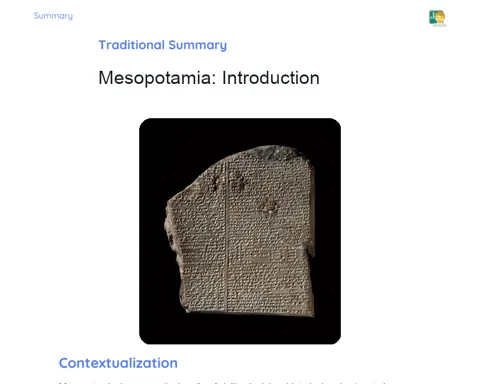Space: Public and Domestic | Teachy Summary
Once upon a time, in a vibrant futuristic city, there were three inseparable friends: Léo, Maria, and João. They were curious and loved exploring the intriguing corners of their high-tech metropolis. One day, while walking through the neighborhood, they found a mysterious digital map on Léo's tablet, filled with icons that pulsed with magical energy. "What could this be?" asked Maria, her eyes sparkling with curiosity. With a touch, the map revealed secrets about the different types of spaces in the city, drawn in animated and glowing graphics.
"Shall we uncover these mysteries?" suggested Maria, her heart racing with excitement. "Of course!" the other two replied in unison. By tapping on the park icon, the map magically transported them to a lively square. It was a vibrant public space, with children playing on the playgrounds, adults chatting on the benches, and leafy trees adorning the area. A calm voice, seemingly coming directly from the map, explained: "This is a public space, where everyone has access. It is an essential place for social interaction and community life." The friends observed how people interacted, laughing and sharing moments, as the sun reflected off the green leaves.
In the blink of an eye, the scene changed dramatically. Now they were in a cozy living room. "This is a domestic space," the voice explained again, now softer, almost maternal. "It is the place where we find security, privacy, and comfort with our family." Maria examined the details: the bedrooms, the kitchen, the smell of freshly brewed coffee, and the warm sound of the television in the background. "Here we can rest, do our daily chores, and share special moments with our loved ones," João reflected, admiring a family photo mural.
Before they could ponder more, a cool breeze enveloped them, transporting them to a majestic forest. "Welcome to an environmental conservation area," the voice of the map whispered, respecting the tranquility of the environment. "This is a protected space, a sanctuary where nature flourishes, and animals live in harmony. It is crucial for biodiversity preservation." Léo felt the fresh air filling his lungs as the sounds of the forest—the songs of birds, the rustling of leaves, and the sound of a creek—invaded his senses. Maria and João looked on in wonder at the richness of the plants, flowers, and small animals that inhabited the area, understanding the importance of protecting such beauty.
To continue the journey, the friends needed to answer challenging questions posed by the magical map. "What is the main characteristic of a public space?" Léo, with a confident smile, pressed the answer icon on the tablet: "It is accessible to everyone and promotes social interaction." The map gleamed in approval. Next, Maria answered the question about the domestic space: "It is a private place where we live with our family." Again, a gleam of recognition. Finally, João took the lead with the question about environmental conservation areas: "They are protected spaces that preserve nature and biodiversity." Each correct answer brought a new wave of knowledge and accomplishment.
After they got the correct answers, the voice of the map warmly congratulated them: "You have learned to distinguish between different types of spaces: public, domestic, and environmental conservation. Each has a unique and essential importance to society." Back at the starting point, the friends were wiser and deeply aware of the importance of the spaces around them. They made a silent promise to always respect and cherish each of these spaces, mindful of their crucial roles in a balanced and harmonious world.
And so, the epic journey of the three friends came to an end, but the lesson learned stayed alive in their hearts. They knew that regardless of where they were, they could always rely on the knowledge gained to contribute to a better and more conscious world. After all, the true power lay not just in exploration but in understanding and respecting every space that makes up our everyday lives.



